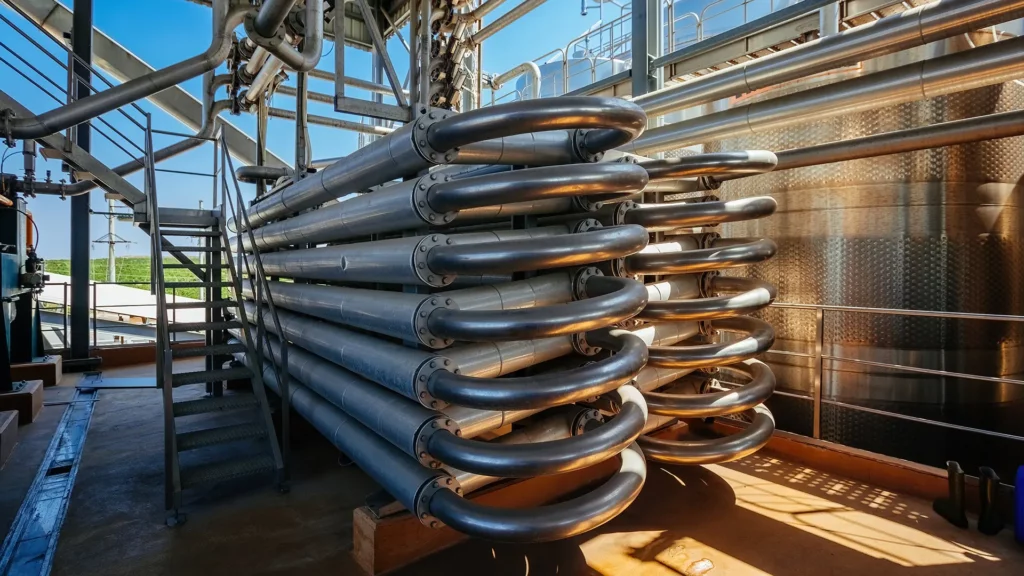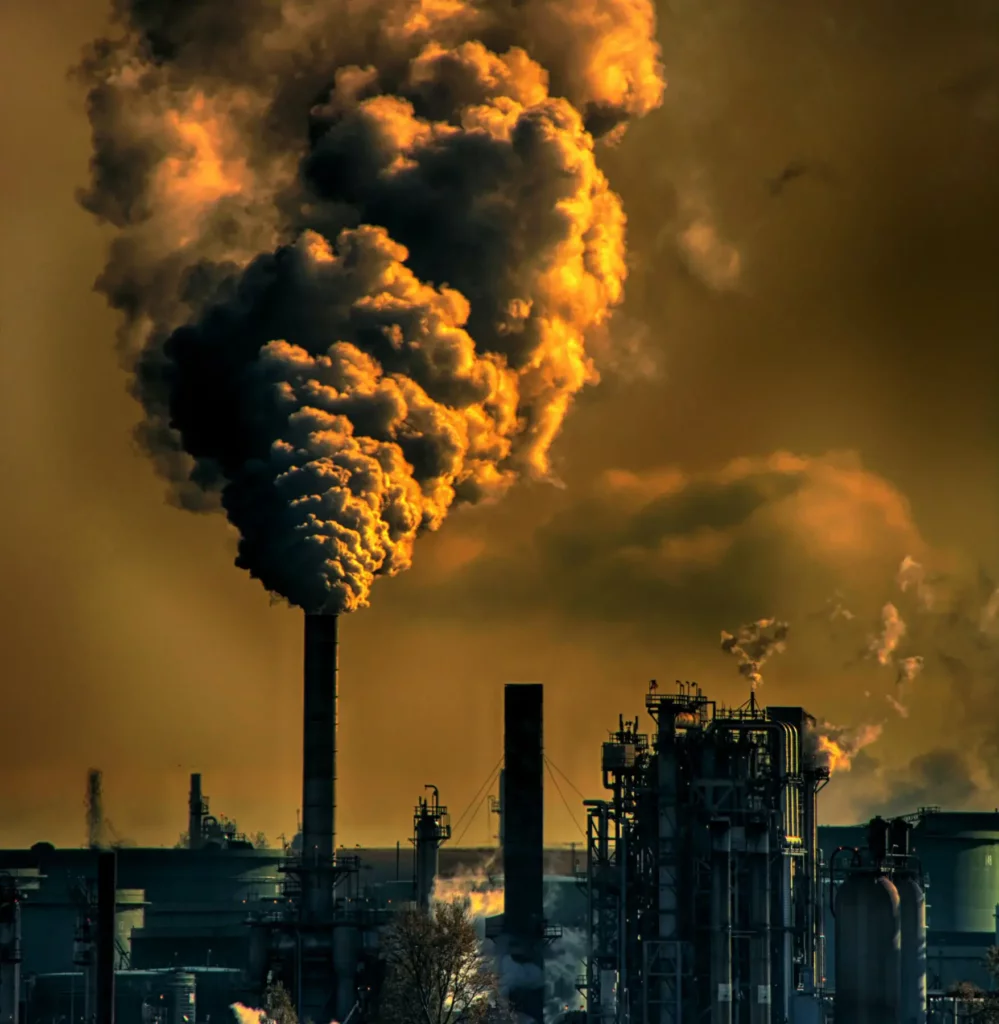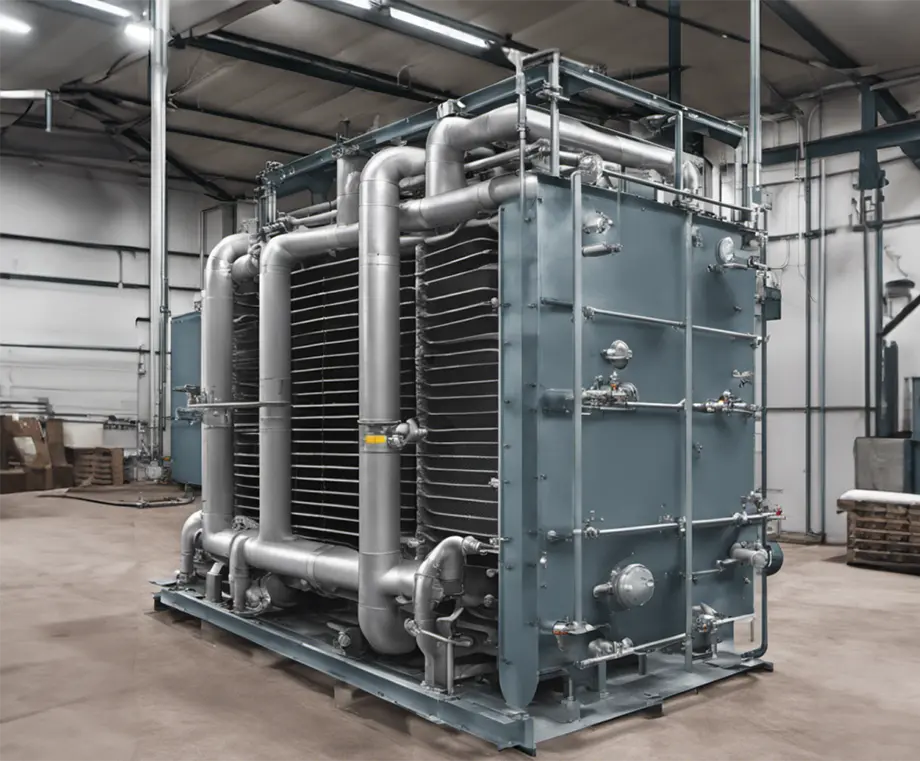With ever changing gas and energy prices, optimizing energy consumption is not only a matter of reducing operating costs but also a crucial step towards increased sustainability and compliance with environmental regulations. This can be done, for example, by performing heat recovery in your sites’ exhaust streams. Installing heat exchangers downstream of your process equipment is a common method for capturing waste heat.
Table of Contents
What is an Industrial Heat Exchanger?

Those involved in industrial sites would already be familiar with heat exchangers. These systems are designed to enable heat transfer between two streams while preventing them from mixing. There are many types of heat exchangers, and each of them is particularly suited for different applications. Among these are:
- Shell-and-tube heat exchanger
- Shell-and-plate heat exchanger
- Plate heat exchanger
- Bare-tube heat exchanger
- Finned-tube heat exchanger
Heat exchangers are incredibly versatile and can be employed in a variety of industrial applications and in multiple industries such as:
- Food and beverage manufacturing
- Paper mills
- Chemical and pharmaceutical plants
- Refineries and petroleum plants
- Tobacco products manufacturing
Things to consider before implementing Heat Exchangers
- Type of heat carriers: The selection of heat exchanger type generally depends on the whether the heat carriers are in liquid or gaseous state. In some cases, phase change (evaporation or condensation) can also take place and would affect the heat exchanger design. Certain waste streams may be corrosive by nature and require certain type of stainless steel and polymer seal.
- Temperature levels and heat transfer duty: The amount of heat to be transferred and the desired inlet and outlet temperatures would dictate the sizing of the required heat exchanger. For instance, narrower temperature approach and large heat transfer duty would often require high heat exchanger efficiency for a given heat transfer area. Thermal shock is also a common occurrence in some applications, which can lead to premature heat exchanger failure.
- Fouling risk: fouling is perhaps the greatest risk factor in heat exchanger operation, especially since waste streams are often polluted. As the heat transfer surface becomes fouled over time, the heat exchange efficiency will decline. Clogging may also occur, which would increase pump/fan power consumption, and will eventually require extensive maintenance activities. This risk can be mitigated by selecting the suitable heat exchanger type and/or by adding self-cleaning capability.
Achieving Compliance and Sustainability
Besides cost savings, industrial heat exchangers align with environmental regulations and sustainability goals. Implementing energy-efficient practices can simplify compliance with emission limits and other environmental requirements. Moreover, reducing energy consumption is a step towards a greener and more sustainable future, a priority for industries worldwide.

Customized Solutions by JOA Air Solutions
In many situations, capturing waste heat and recycling it back into your plant’s heat distribution network can yield net savings in your operational costs while also reducing carbon footprint. Neverthelss, it is essential to integrate heat exchangers correctly and in the right place.
The best way to achieve this is to work with experts who understand your unique needs. This is where JOA Air Solutions can help you and guide you for the optimal implementation. With over 25 years of experience, JOA has been designing and implementing systems equipped with various types of heat exchangers in factories around the world.
JOA’s Site Survey & Data Collection Engineers visit your sites to understand the processes and collect crucial data. This data is the foundation of our tailor-made solution, backed by hard data and measurements rather than expert opinions.
Realizing the Benefits
Many industrial sites around the world have implemented these solutions, resulting in significant energy savings and emissions reductions. JOA Air Solutions is committed to eliminating waste heat, and one of the suitable methods is to employ and integrate heat exchangers into industrial processes. Industrial heat exchangers are powerful tools for lowering energy consumption at industrial sites. They capture and reuse waste heat, improve cooling efficiency, reduce energy costs, and help achieve compliance and sustainability goals.
To unlock the full potential of these devices, partnering with an expert like JOA Air Solutions is essential. If you’re ready to improve your site and optimize energy efficiency and sustainability, don’t hesitate to contact JOA for expert consultation.


